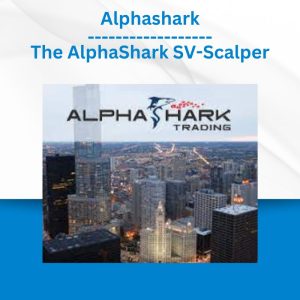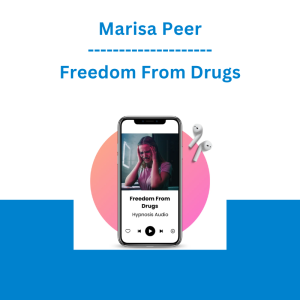*** Proof of Product ***
Exploring the Essential Features of “Philip Manfield & Lewis Engel – Flash Technique for Trauma: Rapid Trauma Processing for Clinicians Using EMDR, CPT, DBT, CBT, and IFS – PESI”
Speakers: Philip Manfield, PhD | Lewis Engel, PhD
Duration: 6 Hours 18 Minutes
Format: Audio and Video
Copyright:Nov 18, 2022
Media Type: Digital Seminar
Description
Every trauma therapist feels the tension. If I go there with my clients, will they be retraumatized? Will they drop out of treatment? If I don’t go there… am I colluding with their avoidance? Am I keeping them stuck?
What if there was a way to painlessly and rapidly resolve your clients’ most distressing memories?
The Flash Technique is a safe and effective strategy for helping your clients process trauma-related disturbance by having them focus on a positive anchor while traumatic memories are effortlessly processed in their background awareness.
Depending on the type of trauma memory, Flash may be a complete intervention, or it may be paired with any of the therapies you utilize in your practice.
Learn the Flash Technique directly from developer Dr. Phil Manfield, along with Dr. Lewis Engel, with whom he has trained thousands of therapists internationally. These master clinicians will walk you step-by-step through this easy-to-learn technique by:
- sharing videos of real Flash sessions
- conducting live demonstrations with training attendees
- facilitating practica in which you will be led to experience the transformative power of Flash for yourself
You’ll walk away knowing how a Flash session will feel for your clients – and seeing for yourself how this technique will drastically reduce your own risk of vicarious traumatization and burnout.
Purchase today to revolutionize your practice with the Flash Technique.
Speakers
Philip Manfield, PhD
Philip Manfield, PhD, developed the Flash Technique, which he teaches nationally and internationally. He has practiced psychotherapy in the San Francisco Bay Area since 1975. Dr. Manfield has authored or edited four books about psychotherapy and EMDR, including EMDR Up Close: Subtleties of Trauma Processing, and EMDR Casebook. He is committed to research-based practice and has been lead author on two papers concerning Flash in the Journal of EMDR Practice and research and principal investigator of and collaborator/consultant on ongoing studies supporting the efficacy and safety of Flash Technique.
Speaker Disclosures:
Financial: Dr. Philip Manfield maintains a private practice and has an employment relationship with John F. Kennedy University. He receives a speaking honorarium as a national EMDR trainer and consultant. Dr. Manfield is a published author and receives royalties. He receives a speaking honorarium and recording royalties from Pesi, Inc. He has no relevant financial relationships with ineligible organizations.
Non-financial: Dr. Philip Manfield has no relevant non-financial relationships.
Lewis Engel, PhD
Lewis Engel, PhD, is a clinical psychologist in private practice in San Rafael, California, and consults with both group of therapists and individual therapists mastering EMDR and Flash Technique. Dr. Engel is a former associate professor of psychology at Lone Mountain College, San Francisco. He co-authored Imaginary Crimes: Why We Punish Ourselves and How To Stop, with Tom Ferguson, MD, which has been translated and published internationally. Dr. Engel collaborates with Dr. Phil Manfield, in researching and disseminating the Flash technique.
Speaker Disclosures:
Financial: Dr. Lewis Engel maintains a private practice and receives royalties as a published author. He receives a speaking honorarium from PESI, Inc. He has no relevant financial relationships with ineligible organizations.
Non-financial: Dr. Lewis Engel is a member of the American Psychological Association and the Eye Movement Desensitization and Reprocessing International Association.
Objectives
- Analyze common problems in trauma processing that Flash Technique can transform to improve treatment outcomes.
- Develop at least two strategies for addressing resistance in trauma treatment to put into practical use in-session.
- Differentiate the five essential features of the Flash Technique.
- Utilize the emerging adult perspective to reduce disturbance of trauma memories to alleviate trauma-related symptoms.
- Investigate how reduced conscious activation of memory results in more effective trauma processing.
- Evaluate the current research on Flash Technique to inform the clinical decision-making process.
Outline
Select and Prepare Clients for Flash Technique
- Overcome the three most common problems in trauma processing
- Tackle blocking beliefs, dissociation, and other resistance
- Address secondary gain in treatment
- Strategies for successful telehealth delivery of Flash
How to Identify Appropriate Trauma Targets
- History-taking for Flash Technique
- Accessing highly disturbing trauma memories with less distress
- Identifying the source memory that drives the trauma response
Flash Technique Step-by-Step
- Identify and intensify a Positive Engaging Focus
- Strategies for bilateral stimulation and the triple blink procedure
- Track progress with SUDs and deciding what to do next
- Troubleshoot obstacles to successful processing
What Does Flash Technique Look Like?
- Demonstrations: videos, live volunteers, group practica
Understand the Mechanisms of and Evidence Base for Flash Technique
- Shed light on the mechanism of Flash Technique
- RCTs demonstrating safety and efficacy
- Limitations of the research and potential risk
Target Audience
- Counselors
- Psychologists
- Psychotherapists
- Social Workers
- Marriage & Family Therapists
- Addiction Counselors
- Case Managers
- Physicians
- Mental Health Professionals
Please see the full list of alternative group-buy courses available here: https://lunacourse.com/shop/










 Money Miracle - George Angell - Use Other Peoples Money To Make You Rich
Money Miracle - George Angell - Use Other Peoples Money To Make You Rich  Gallbladder Essentials Course - Eric Berg
Gallbladder Essentials Course - Eric Berg  Toshko Raychev - Profit System + ITF Assistant
Toshko Raychev - Profit System + ITF Assistant  SMB - Options Training
SMB - Options Training  Visionary Leadership Skills - Robert Dilts
Visionary Leadership Skills - Robert Dilts  Erik Banks - Alternative Risk Transfer
Erik Banks - Alternative Risk Transfer  Alphashark - The AlphaShark SV-Scalper
Alphashark - The AlphaShark SV-Scalper  Matan Feldman - The 13-Week Cash Flow Modeling - Wall Street Prep
Matan Feldman - The 13-Week Cash Flow Modeling - Wall Street Prep  Chris Capre - Advanced Price Action Ongoing Training & Webinars
Chris Capre - Advanced Price Action Ongoing Training & Webinars  Greg Loehr - Advanced Option Trading With Broken Wing Butterflies
Greg Loehr - Advanced Option Trading With Broken Wing Butterflies  Quantum Chart Mastery Course
Quantum Chart Mastery Course  Jesse Livermore Trading System - Joe Marwood
Jesse Livermore Trading System - Joe Marwood  Self Confidence Generator - George Hutton
Self Confidence Generator - George Hutton  Team NFT Money - Ultimate NFT Playbook
Team NFT Money - Ultimate NFT Playbook  Vic Noble, Kelvin Thornley - Tactical FX Trend Trading Strategies
Vic Noble, Kelvin Thornley - Tactical FX Trend Trading Strategies  Julie Stoian & Cathy Olson - Launch Gorgeous - Funnel Gorgeous Bundle
Julie Stoian & Cathy Olson - Launch Gorgeous - Funnel Gorgeous Bundle  Fred Haug - Virtual Wholesaling Simplified
Fred Haug - Virtual Wholesaling Simplified  Dejan Dave Nick - Drop Servicing Pro
Dejan Dave Nick - Drop Servicing Pro  Marisa Peer - Freedom From Drugs
Marisa Peer - Freedom From Drugs  Jason Buckles & Victor Yalom - Diagnosing Depressive, Bipolar, and Alcohol Use Disorders
Jason Buckles & Victor Yalom - Diagnosing Depressive, Bipolar, and Alcohol Use Disorders  Racing Workshop - Complete Online Package
Racing Workshop - Complete Online Package  Ramit Sethi – 50 Proven Email Scripts
Ramit Sethi – 50 Proven Email Scripts  Sovereign Man Confidential - Renunciation Video
Sovereign Man Confidential - Renunciation Video  Tom Torero - What To Do On A Date (A-Z Guide)
Tom Torero - What To Do On A Date (A-Z Guide)  Jennifer Angier - MEADOWS: Awakening on Purpose
Jennifer Angier - MEADOWS: Awakening on Purpose  George Fontanills & Tom Gentile - Optionetics 6 DVD Series Home Study Course (Digital Download)
George Fontanills & Tom Gentile - Optionetics 6 DVD Series Home Study Course (Digital Download)  Cathy Lockett - The Heart in Detail
Cathy Lockett - The Heart in Detail  Cancer Care & Classical Chinese Medicine - Jeffrey Yuen
Cancer Care & Classical Chinese Medicine - Jeffrey Yuen  Simpler Trading - Bruce Marshall - The Options Defense Course
Simpler Trading - Bruce Marshall - The Options Defense Course  Joseph Monahan, John Whitcomb, Joseph Willuweit & Monique Patton - Illinois Mental Health & The Law - PESI
Joseph Monahan, John Whitcomb, Joseph Willuweit & Monique Patton - Illinois Mental Health & The Law - PESI  Lovingyou DeluxeBundle Books
Lovingyou DeluxeBundle Books  Emanuele Bonanni - My Trading Way
Emanuele Bonanni - My Trading Way  Phoebe Kuhn - Messaging Program - The Content Emporium
Phoebe Kuhn - Messaging Program - The Content Emporium  Joshua Winn - Introduction to Astrophysics
Joshua Winn - Introduction to Astrophysics  Gerald O'Donnell - The Complete Remote Viewing System
Gerald O'Donnell - The Complete Remote Viewing System  AJ Wilcox - Advanced LinkedIn Ads
AJ Wilcox - Advanced LinkedIn Ads  Angel - Life Mapping A Vision of Success
Angel - Life Mapping A Vision of Success  David Vallieres & Tim Warren - Expert Option Trading
David Vallieres & Tim Warren - Expert Option Trading